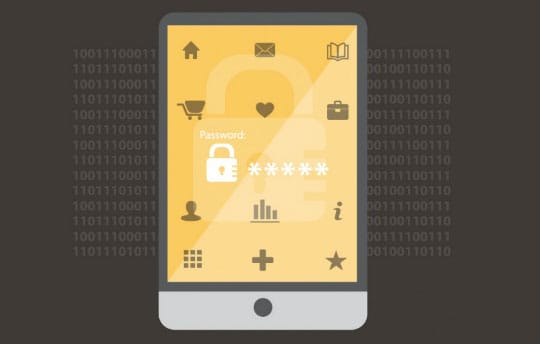Having your account hacked can be troublesome for both you and your friends, we often tend to panic in these kinds of situations and because of that, we are unable to see the obvious solutions to our problem. So if your account got hacked, relax and follow these tips calmly and patiently to get it back.
I’m well aware that time is of the highest importance in these kinds of situations, but if your rush things out you might make things worse than they already are at this moment, I’ll explain what this means in a second.
How to know if your account is hacked
If you’re absolutely sure that your account is hacked, then you may skip this section. If you are not sure about the state of your account or you just want to stay on the safe side by knowing what’s up, then keep on reading.

In overall, there are about three signs of an account that is hacked.
- Your contacts are receiving messages that you didn’t send.
- Slight changes to your settings and information.
- You’re unable to log in.
1) Your contacts are receiving messages that you didn’t send
 That is something common on Facebook if your friends are saying that they got some weird messages from you, but you didn’t send anything, then chances are that someone managed to get into your account or that you got infected with a virus which forwards malicious messages automatically.
That is something common on Facebook if your friends are saying that they got some weird messages from you, but you didn’t send anything, then chances are that someone managed to get into your account or that you got infected with a virus which forwards malicious messages automatically.
2) Slight changes to your settings and information
 If you noticed some minor changes to your information and your settings since the last time you logged in, then someone might have managed to get into your account and changed your info. Usually, hackers change your email to their own in hopes that you won’t notice it and that they will be able to get all the info they want from you without having to lift a finger.
If you noticed some minor changes to your information and your settings since the last time you logged in, then someone might have managed to get into your account and changed your info. Usually, hackers change your email to their own in hopes that you won’t notice it and that they will be able to get all the info they want from you without having to lift a finger.
3) You’re unable to log in
 If you’re unable to log in using your standard username and password and you’re absolutely sure that you’re typing it right, then there is no doubt that someone hacked you and changed your password, email, username, or all of them.
If you’re unable to log in using your standard username and password and you’re absolutely sure that you’re typing it right, then there is no doubt that someone hacked you and changed your password, email, username, or all of them.
Alright, now that we know if your account is hacked, it’s about time to see how we can get it back.
1) Perform a scan with an Anti-Malware
 Download and install an anti-malware software, then perform a full scan with it. You can pick what suits you best. Your PC might be infected with malware that steals your information or one that cracks your passwords. If that’s the case, then you can follow all the steps that will come next, and they will all be for nothing.
Download and install an anti-malware software, then perform a full scan with it. You can pick what suits you best. Your PC might be infected with malware that steals your information or one that cracks your passwords. If that’s the case, then you can follow all the steps that will come next, and they will all be for nothing.
Before moving on we must make sure that your PC is clean from malware that will interfere with the restoration progress. There is a chance that your account got hacked because of malware in the first place. For example, a keylogger malware will record everything that you type and will send it to the one who installed it, of course, that includes your login credentials.

If the Anti-Malware is not detecting anything, then give it a try with your Antivirus too, just to be on the safe side.
You may also like: Best Free Malware Removal Software 2017 to Remove Virus & Spyware.
2) Check your settings
 Now you’re sure that you don’t have a malware which would cause you any trouble. It’s time to start the procedure. If you still have access to your account, then you must check your settings to make sure that the hacker will not get notified about the next step that we’re about to take, that is to change your password.
Now you’re sure that you don’t have a malware which would cause you any trouble. It’s time to start the procedure. If you still have access to your account, then you must check your settings to make sure that the hacker will not get notified about the next step that we’re about to take, that is to change your password.
Make sure that he will not get notified about you changing your password. If you make things right, he shouldn’t know that you changed your password until it’s too late for him to do anything about it. For example, if your account has email forwarding, make sure that it’s not sending notifications to any strange emails and such.
3) Change your password
 There is a chance that the hacker managed to get into your account but didn’t change your password. Perhaps he thought that you wouldn’t notice and that you would keep on using it as you usually do without attempting to throw him out. If that’s the case, then change your password asap.
There is a chance that the hacker managed to get into your account but didn’t change your password. Perhaps he thought that you wouldn’t notice and that you would keep on using it as you usually do without attempting to throw him out. If that’s the case, then change your password asap.
Make it unpredictable and make sure that you haven’t used it before or that you have the same password for different accounts.

4) Contact support
 You’ll have to contact support for two different cases.
You’ll have to contact support for two different cases.
- You’re unable to log in at all.
- You’re able to log in, but you also want to throw the hacker out.
5) You’re unable to log in at all
 If the hacker completely changed your password and username, then contact support and explain the situation to them. The chances are that you’ll have to prove that the account is yours. If you do so the employees will be more than happy to kick the hacker out of your account and give it back to its rightful owner.
If the hacker completely changed your password and username, then contact support and explain the situation to them. The chances are that you’ll have to prove that the account is yours. If you do so the employees will be more than happy to kick the hacker out of your account and give it back to its rightful owner.
For example, if your account is an Instagram one the support might ask you what photos you had taken or who your followers are. If you’re the rightful owner, then you should know the details about the small things and such. But this is just an example; it’s impossible to know exactly what they are going to ask you so be prepared for everything.

In some cases, this can happen if the browser is redirecting you to a fake web page. For example typing in facebook.com is taking you another web page without your consent. Browser Hijacker is a culprit here which you can get rid of using adware remover tools.
Recommended reading: Top 10 Best Free Adware Removal Tools for Windows PC.
6) You’re able to log in, but you also want to throw the hacker out
 You might have managed to change your password. But the chances are that the hacker is still logged in to your account. In that case, contact the support, explain the situation to them, and tell them to log out everyone that is connected to your account. The hacker will not be able to log in afterward because now he doesn’t know the new password.
You might have managed to change your password. But the chances are that the hacker is still logged in to your account. In that case, contact the support, explain the situation to them, and tell them to log out everyone that is connected to your account. The hacker will not be able to log in afterward because now he doesn’t know the new password.

7) Inform all of your contacts about this
 You’re not the only one who is in danger of this situation. All of your contacts might have received messages that could be harmful either because they are scams, or they have malicious software attached to them. So inform them in a timely manner about this situation. Also, tell them not to open any suspicious messages that came from your account.
You’re not the only one who is in danger of this situation. All of your contacts might have received messages that could be harmful either because they are scams, or they have malicious software attached to them. So inform them in a timely manner about this situation. Also, tell them not to open any suspicious messages that came from your account.





